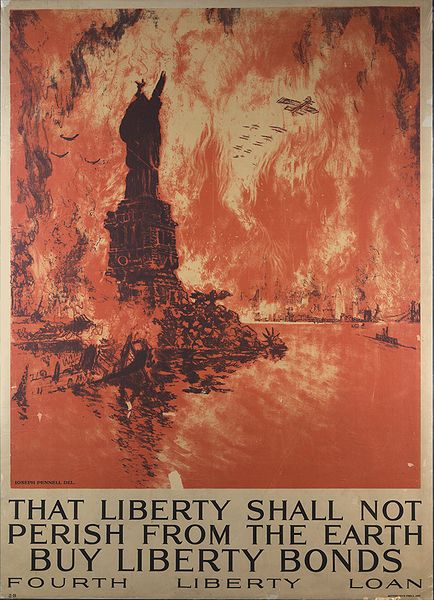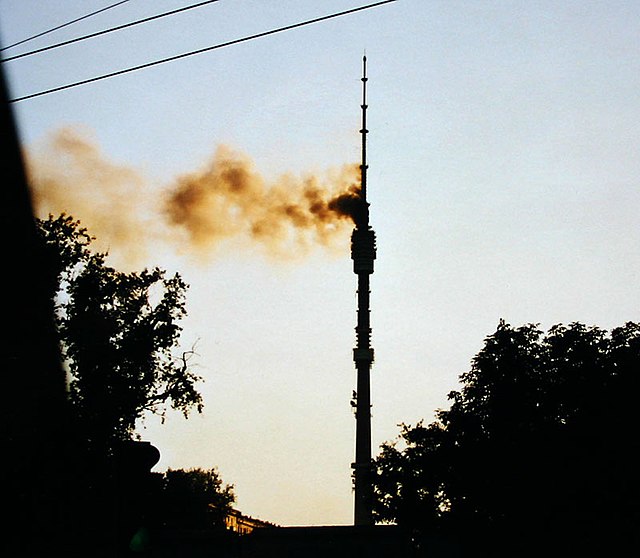A firestorm is a conflagration which attains such intensity that it creates and sustains its own wind system. It is most commonly a natural phenomenon, created during some of the largest bushfires and wildfires. Although the term has been used to describe certain large fires, the phenomenon's determining characteristic is a fire with its own storm-force winds from every point of the compass towards the storm's center, where the air is heated and then ascends.
A view of one of the Tillamook Burn fires in August 1933
A firestorm after the bombing of Hiroshima
A picture of a pyro-cumulonimbus taken from a commercial airliner cruising at about 10 km. In 2002 various sensing instruments detected 17 distinct pyrocumulonimbus cloud events in North America alone.
Joseph Pennell's 1918 prophetic Liberty bond poster calls up the pictorial image of a destroyed New York City, totally engulfed in a firestorm. At the time, the armaments available to the world's various air forces were not powerful enough to produce such a result.
A conflagration is a large fire. Conflagrations often damage human life, animal life, health, and/or property. A conflagration can begin accidentally or be intentionally created (arson). A very large fire can produce a firestorm, in which the central column of rising heated air induces strong inward winds, which supply oxygen to the fire. Conflagrations can cause casualties including deaths or injuries from burns, trauma due to collapse of structures and attempts to escape, and smoke inhalation.
The August Complex fire in 2020, the largest fire in California's history
Burned trees in front the Montagna di Vernà, Peloritani mountains, Sicily
Ostankino Tower fire
A fire in New Orleans after Hurricane Katrina








